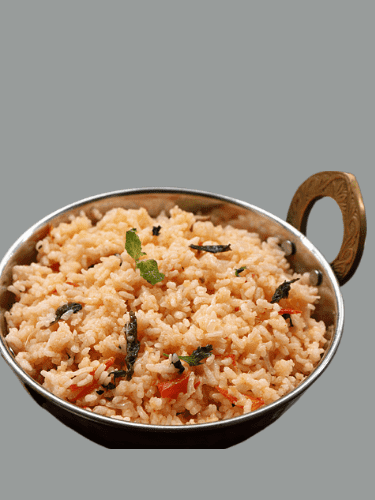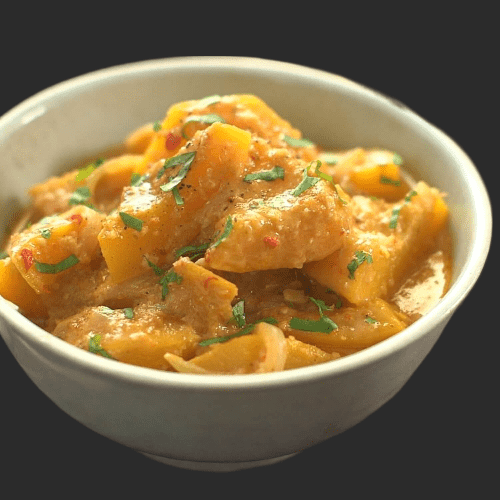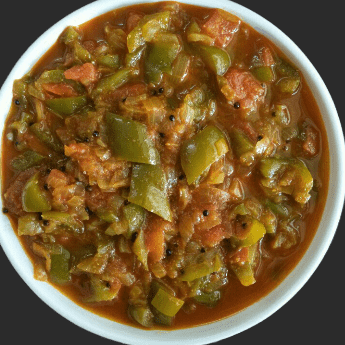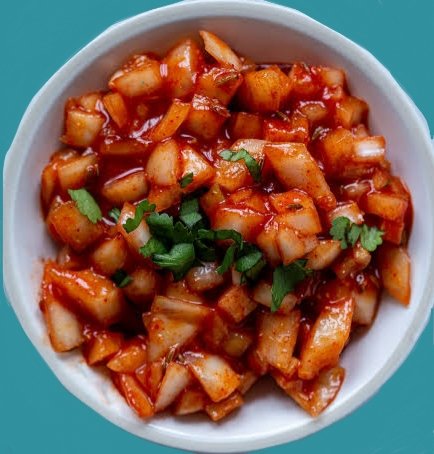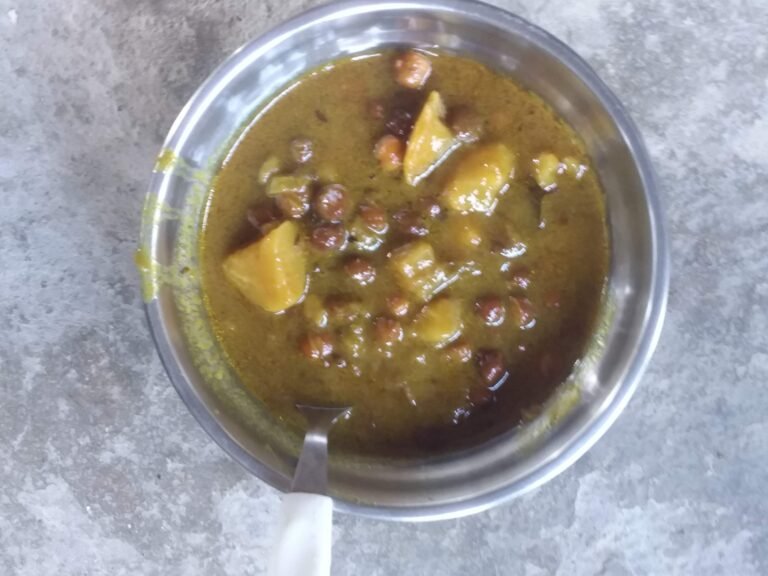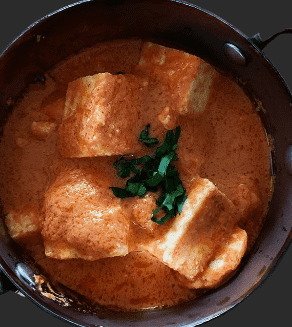Aloo ki Vrat Wali Sabji
Introduction :
What is Aloo ki Vrat Wali Sabji? Aloo ki Vrat Wali Sabji is a simple, delicious, and comforting potato curry that is specifically made for fasting (vrat) days. It’s a staple during Navratri, Ekadashi, Shivratri, and other Hindu fasting occasions. The sabji is prepared using ingredients allowed during fasting, such as potatoes, rock salt, and mild spices, making it light, flavorful, and easy on the stomach.
Cultural Significance of Fasting Foods: In Indian culture, fasting is not just a religious practice but also a way to cleanse and detoxify the body. Special fasting foods like Aloo ki Vrat Wali Sabji are prepared to align with these traditions, using ingredients that are sattvic (pure and light), promoting calmness, and supporting spiritual growth.
Why Aloo ki Sabji? Potatoes are a popular ingredient during fasting because they are filling, versatile, and easy to digest. This sabji brings a balance of taste and nutrition, making it an ideal choice for those observing fasts but still wanting to enjoy a delicious meal.
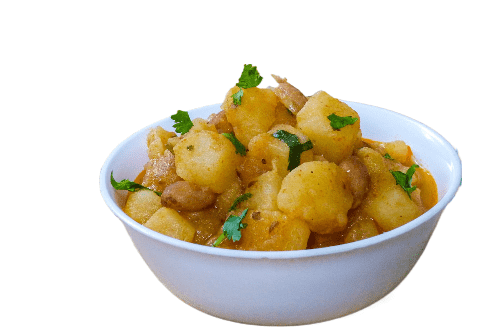
Nutritional Benefits of Aloo ki Vrat Wali Sabji :
- High in Carbohydrates: Potatoes are rich in complex carbohydrates, providing a quick and sustained energy source during fasting when food intake is limited.
- Rich in Potassium: Potatoes help maintain electrolyte balance, which is crucial during fasting periods to prevent muscle cramps and maintain overall hydration.
- Low in Fat: This sabji is generally cooked in minimal ghee or oil, making it a light and low-fat option, suitable for those avoiding heavy foods during fasting.
- Rich in Vitamin C and B6: Potatoes are a good source of these essential vitamins, which help boost immunity and maintain nervous system health.
- Easily Digestible: Potatoes are gentle on the digestive system, making them a safe choice during fasting when the body is more sensitive.
Ingredients for Aloo ki Vrat Wali Sabji :
- Potatoes: The star of the dish; use medium-sized potatoes, boiled and diced for easy cooking.
- Ghee or Oil: Traditionally, ghee is preferred for its rich taste and sattvic qualities, but any neutral oil like peanut oil can be used.
- Cumin Seeds (Jeera): Adds a warm, earthy flavor to the sabji.
- Green Chilies: Alter the amount concurring to your zest inclination.
- Ginger: Freshly grated ginger adds a zesty, warming note.
- Rock Salt (Sendha Namak): The only salt allowed during fasting, it adds a mild and subtle taste.
- Black Pepper Powder: Adds a touch of heat and enhances digestion.
- Coriander Takes off: Crisply chopped coriander takes off for embellishing and a burst of freshness.
- Lemon Juice: Adds a tangy finish and balances the flavors beautifully.
- Water: To adjust the consistency of the sabji; you can make it thick or thin according to your preference.
Step-by-Step Recipe for Aloo ki Vrat Wali Sabji :
Preparation of Potatoes :
- Boiling Potatoes: Wash the potatoes thoroughly and boil them until they are soft but not mushy. You can do this in a pressure cooker for 2-3 whistles or boil them in a pot of water until tender.
- Peeling and Dicing: Once the potatoes are cooked and cooled slightly, peel and cut them into bite-sized cubes. Keep them aside for cooking.
Cooking the Sabji :
- Warming Ghee: In a dish, warm 1-2 tablespoons of ghee on medium warm.The use of ghee enhances the flavor and gives the sabji a rich, traditional taste.
- Tempering with Spices: Add cumin seeds to the hot ghee and let them splutter. The cumin seeds infuse the ghee with a warm, nutty flavor, which forms the base of the dish.
- Including Aromatics: Include chopped green chilies and ground ginger to the container. Sauté for a miniature until the crude smell of ginger blurs absent. Be cautious not to burn the flavors, as they cook rapidly.
Incorporating Potatoes: Add the boiled and diced potatoes to the pan. Gently toss them to coat with the ghee and spices. Stir for 2-3 minutes to allow the potatoes to absorb the flavors. - Seasoning: Sprinkle rock salt and black pepper powder over the potatoes. Blend well to guarantee the flavoring is equally dispersed.
- Adjusting Consistency: Add water according to your preference; a thinner consistency is perfect for those who enjoy the sabji with kuttu ki roti or samak rice, while a thicker version goes well with sabudana khichdi.
- Simmering: Cover the pan with a lid and let the sabji simmer for 5-7 minutes on low heat. This step allows the potatoes to soak up all the spices and seasoning.
- Finishing Touches: Once the sabji is cooked, add a squeeze of fresh lemon juice and garnish with chopped coriander leaves for a burst of flavor and color.
- Ready to Serve: Serve hot with vrat-friendly sides like kuttu puri, rajgira paratha, or samak rice.
Tips and Tricks for Perfect Aloo ki Vrat Wali Sabji :
- Choosing the Right Potatoes: Use starchy potatoes like Yukon Gold or Russets as they hold their shape well and absorb flavors better.
- Avoid Overcooking: Boil the potatoes until just tender; overcooking can make them mushy and spoil the texture of the sabji.
- Balancing Spices: Since fasting foods are meant to be light, avoid overpowering the sabji with too many spices. A simple blend of cumin, ginger, and black pepper keeps the flavors subtle yet delightful.
- Consistency Control: Alter the sum of water based on your craved consistency. A thicker sabji works well with breads, while a slightly thinner one pairs perfectly with rice.
- Enhancing Flavor: Adding a small piece of crushed, dried ginger (saunth) during cooking can enhance the flavor and aid digestion.
- Alternative Cooking Method: You can also prepare this sabji using a slow cooker for a hands-off cooking experience. Add all the ingredients to the slow cooker and cook on low for 4 hours for a deep infusion of flavors.
Variations of Aloo ki Vrat Wali Sabji :
- Aloo Tamatar ki Sabji: Add pureed tomatoes to the sabji for a tangy twist. The tomatoes add a rich, slightly acidic note that complements the potatoes beautifully. Ensure to use fresh, ripe tomatoes and avoid canned versions during fasting.
- Aloo Paneer Sabji: For added protein, toss in cubes of paneer (Indian cottage cheese) towards the end of cooking. Paneer adds a creamy texture and makes the sabji more filling.
- Dry Aloo Sabji: Skip adding water and cook the potatoes in a dry spice blend for a more crispy, stir-fried version of the sabji.
- Aloo Makhana Sabji: Add roasted makhanas (fox nuts) to the sabji for an interesting texture contrast. The makhanas absorb the gravy and become soft and flavorful.
- Spicy Aloo Sabji with Red Chilies: Add whole red chilies and a dash of red chili powder for those who prefer a spicier version. This sabji has a beautiful red hue and a fiery kick.
- South Indian Style Aloo Sabji: Temper the ghee with mustard seeds, curry leaves, and a pinch of hing (asafoetida) for a South Indian twist on this classic fasting dish.
Serving Suggestions :
- With Kuttu Ki Puri: Kuttu (buckwheat) puris are a popular fasting bread that pairs wonderfully with Aloo ki Vrat Wali Sabji. The crispiness of the puris complements the soft, spicy potatoes perfectly.
- With Samak Rice: Also known as barnyard millet, Samak rice is a vrat-friendly grain that makes for a light yet satisfying meal when served with this potato curry.
- As a Side Dish: Serve Aloo ki Sabji as a side dish with a vrat thali (fasting platter) that includes sabudana khichdi, raita, and fruit salad.
- With Rajgira Paratha: Rajgira (amaranth) parathas are soft, gluten-free flatbreads that soak up the flavors of the sabji beautifully.
- As a Standalone Meal: Aloo ki Vrat Wali Sabji is wholesome enough to be enjoyed on its own, especially when garnished with fresh coriander and a squeeze of lemon.
Frequently Asked Questions (FAQs) :
Q1: Can I make Aloo ki Vrat Wali Sabji without ghee?
A1: Yes, you can substitute ghee with any vrat-friendly oil like peanut oil or sunflower oil.
Q2: How long can I store Aloo ki Sabji?
A2: The sabji can be put away in an sealed shut holder in the fridge for up to two days. Reheat gently before serving.
Q3: Can I add other vegetables to this sabji ?
A3: During fasting, only certain vegetables are allowed. You can add arbi (taro root), sweet potatoes, or bottle gourd for a variation.
Q4: Is this sabji vegan-friendly?
A4: The sabji is naturally vegetarian, but for a vegan version, substitute ghee with a plant-based oil.
Q5:Can I make this sabji in advance?
A5:Yes, Aloo ki Vrat Wali Sabji can be made in advance and reheated. However, for the best taste and texture, it’s recommended to serve it fresh.
Health Benefits of Including Aloo ki Vrat Wali Sabji in Your Fasting Diet :
- Provides Sustained Energy: The carbohydrates in potatoes release energy slowly, keeping you full and energized throughout the day.
- Promotes Digestive Health: With its light spices and ghee, the sabji aids digestion and prevents acidity, which is often a concern during fasting.
- Supports Hydration: The potassium in potatoes helps balance the body’s fluids, especially important when fasting limits water intake.
- Maintains Electrolyte Balance: Rock salt used in the sabji helps maintain electrolyte levels, which can be disrupted during fasting.
- Helps in Detoxification: The light, sattvic ingredients aid in cleansing the system, aligning with the detoxifying nature of fasting.
Read More : Sama ki Chawal ki Puri
Conclusion :
Aloo ki Vrat Wali Sabji is more than just a fasting dish; it’s a celebration of simple, wholesome ingredients that nourish the body and soul. Whether you are observing a religious fast or simply looking for a light, comforting meal, this sabji fits the bill perfectly. Its delicate balance of flavors, ease of preparation, and versatility make it a go-to recipe for fasting days. Try this traditional recipe, and let the subtle aromas and textures transport you to a place of warmth, comfort, and spiritual fulfillment.
